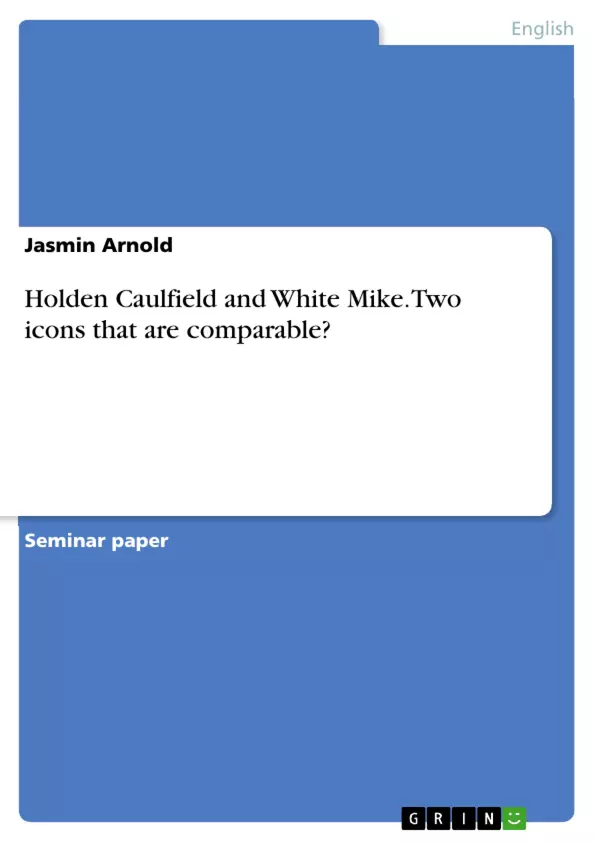The protagonists in J. D. Salinger’s "The Catcher in the Rye" and Nick McDonell’s "Twelve" are commonly compared in literature reviews on novels of education. What do the characters Mike White and Holden Caulfield have in common? Are the two adolescents comparable or are they not?
To answer these questions I will give basic background knowledge about the genre out of which both novels emerge, which is the Bildungsroman or the novel of education. I will then compare Holden Caulfield and White Mike. The aspects that will be in the center of attention are their initial situation, their religion, the feeling of loneliness and the topic of women.
Inhaltsverzeichnis (Table of Contents)
- Introduction
- Theoretical Background: Bildungsromane
- Comparison of Holden Caulfield and White Mike: Common Traits and Differences
- Initial Situation
- Attitude toward Religion
- Loneliness
- Relationships to Women
- Conclusion
- Bibliography
Zielsetzung und Themenschwerpunkte (Objectives and Key Themes)
This research paper aims to analyze the similarities and differences between Holden Caulfield from J.D. Salinger's The Catcher in the Rye and White Mike from Nick McDonell's Twelve, both of which can be classified as Bildungsromane. The paper focuses on examining their common traits and differences, particularly in the context of their initial situations, religious beliefs, experiences with loneliness, and relationships with women.
- The concept of the Bildungsroman as a story of initiation and formation
- The parallels between Holden Caulfield and White Mike's experiences and perspectives
- The impact of past trauma on both protagonists
- The role of societal expectations in shaping their journeys
- The complexities of adolescence and the transition to adulthood
Zusammenfassung der Kapitel (Chapter Summaries)
The introduction establishes the context for the paper by referencing critical opinions about the comparison between Holden Caulfield and White Mike. It then introduces the research question and outlines the structure of the paper.
The theoretical background chapter examines the concept of the Bildungsroman, exploring its defining characteristics and how both The Catcher in the Rye and Twelve fit into this genre. The chapter discusses the phases of exit, transition, and re-entrance in the context of initiation stories and how these phases manifest in the novels.
The third chapter dives into a comparative analysis of Holden Caulfield and White Mike, focusing on their initial situations, attitudes toward religion, experiences with loneliness, and relationships with women. The chapter analyzes the similarities and differences between these characters, highlighting key aspects of their personalities and the events that shape their journeys.
Schlüsselwörter (Keywords)
The key terms and concepts explored in this paper include Bildungsroman, initiation story, adolescent development, social expectations, trauma, loneliness, religion, relationships, gender, and the American novel.
- Quote paper
- Jasmin Arnold (Author), 2009, Holden Caulfield and White Mike. Two icons that are comparable?, Munich, GRIN Verlag, https://www.grin.com/document/470556



